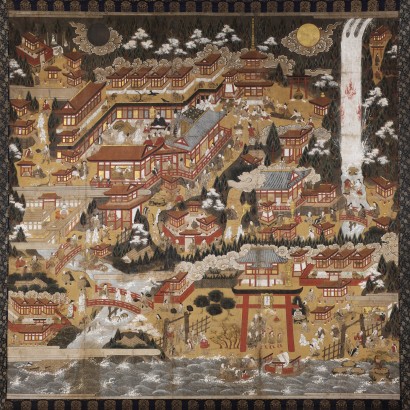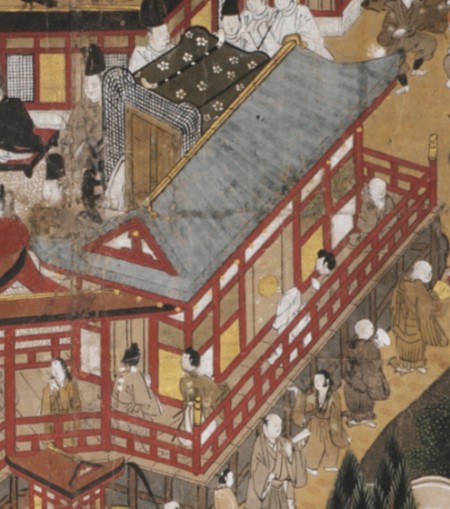Japan, Edo period, 16th–early 17th century; hanging scroll, ink, colors, and gold leaf on paper, 59 x 59 1/2 in.; The Frances Lehman Loeb Art Center, Vassar College, Pratt Fund and Betsy Mudge Wilson, Class of 1956, Memorial Fund, Purchase, 2004.10.
Buddhist Worship in a Shrine
Buddhist Worship in a Shrine, Nachi Pilgrimage Mandala, detail.
A subsidiary hall of Nachi Shrine called Nyoirindo houses Nyoirin Kannon, an important icon of veneration at the site. As the first stop on the Saigoku Pilgrimage, Nyoirindo (now called Seigantoji) became an independent Buddhist temple in the late 19th century. Nyoirindo as depicted here has a bluish tiled rooftop, an identifying feature of Buddhist temples. Already established as a place for kami-worship, Nachi became part of the Kumano pilgrimage in the 11th century. Like many other places in Japan, Buddhism synthesized indigenous beliefs at Nachi, regarding kami—or local gods—as manifestations of Buddhist deities. MD





